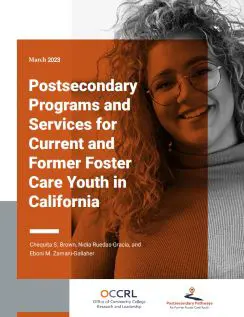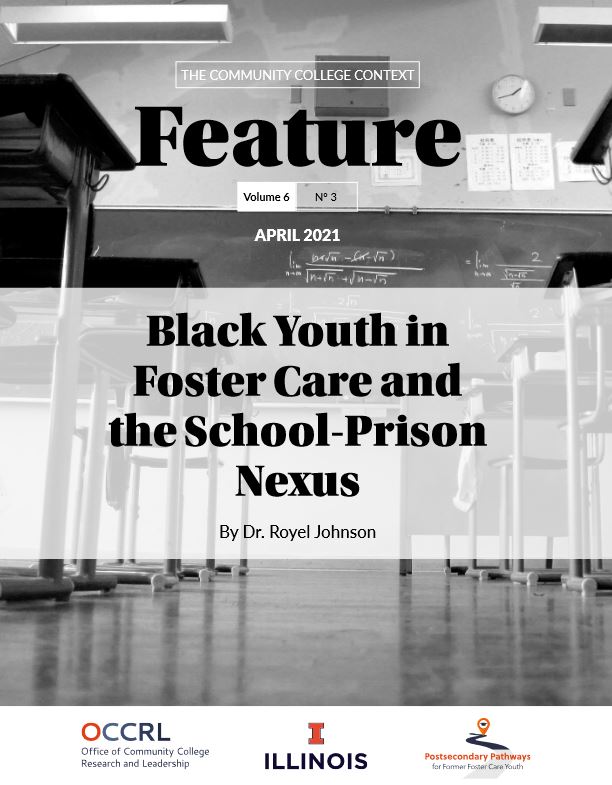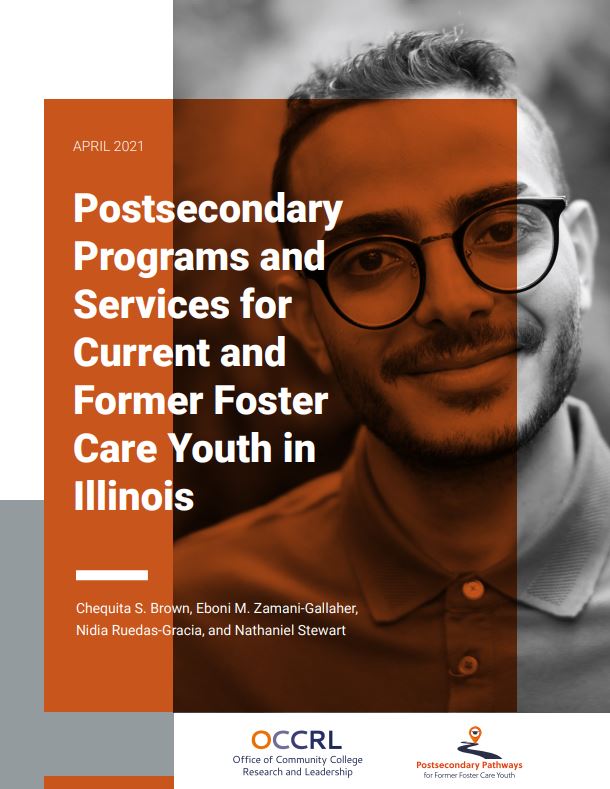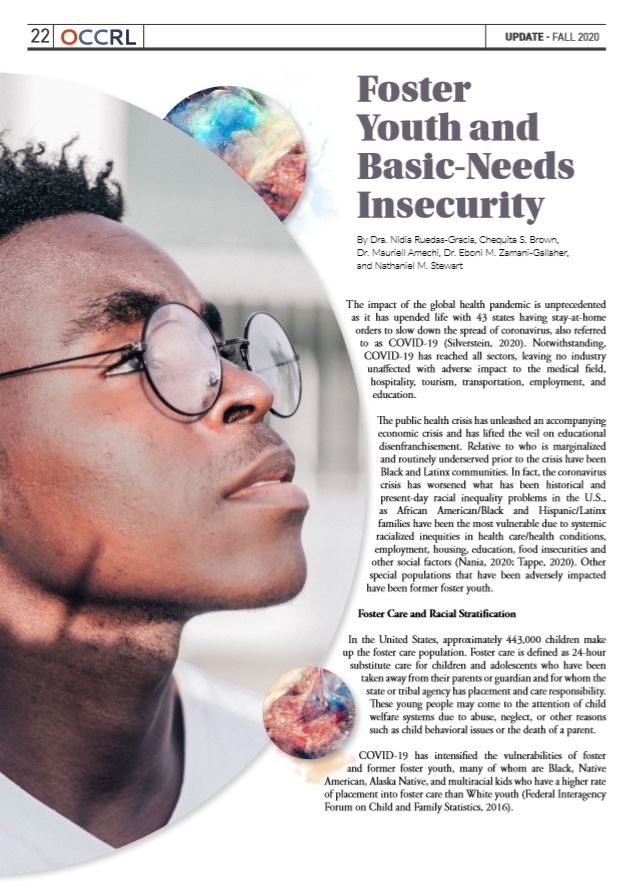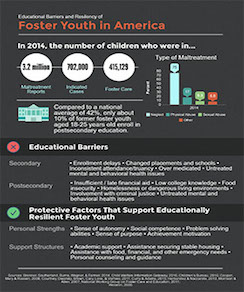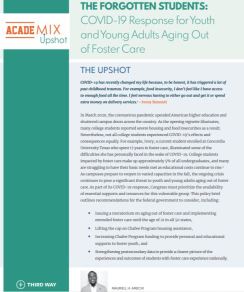
Postsecondary Pathways - for Former Foster Care Youth
This project has been completed and is no longer active.
However, we hope you are able to utilize its resources.
The Postsecondary Pathways for Former Foster Care Youth (PP-FFCY) reflects OCCRL’s commitment to examining and developing postsecondary pathways that support mobility for first-generation, underserved, and minoritized populations, as well as strengthening career pathways to promote seamless transitions from college to careers. This project endeavors to examine postsecondary access, opportunities, and supports for foster youth in Illinois and other states across the county in addressing access and outcomes of FFCY in Career Technical Education (CTE).
Purpose
The Postsecondary Education Pathways for Former Foster Care Youth (PP-FFCY) project is an exploratory study focused on postsecondary pathways for current and former foster youth in Illinois. OCCRL is conducting a comprehensive-needs assessment that provides a descriptive profile of current and former foster youth populations in Illinois; examines postsecondary access, opportunities, and supports for foster youth in Illinois; and addresses disparities in career and technical education (CTE) programs. This project reflects OCCRL’s commitment to examining and developing postsecondary pathways that support mobility for first-generation, underserved, and minoritized populations as well as strengthening and supporting career pathways to promote seamless transitions from college to careers.
Resources
OCCRL aims to increase postsecondary awareness, access, and attainment for current and former foster care youth by providing information on programs and other resources that offer holistic support and services. View the list of postsecondary programs and services.
Strategies to Cultivate a Foster-Friendly Culture on Community College Campuses
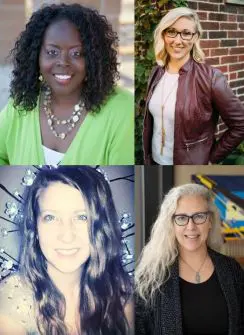 In this episode, Chequita Brown talks with Kate Danielson of the organization Foster Progress, as well as with Anna Wandtke and Tricia Wagner of Rock Valley College in Rockford, Illinois. The group discusses how to cultivate a foster-friendly culture at Illinois community colleges.
In this episode, Chequita Brown talks with Kate Danielson of the organization Foster Progress, as well as with Anna Wandtke and Tricia Wagner of Rock Valley College in Rockford, Illinois. The group discusses how to cultivate a foster-friendly culture at Illinois community colleges.
Navigating College as a Foster Care Alum
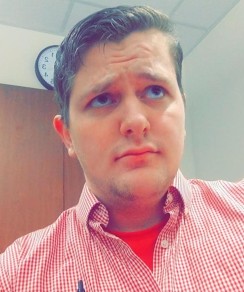 In this episode, OCCRL research assistant Chequita S. Brown talks with Jonathan Stacy, a sophomore at Heartland Community College who is pursuing his studies and a possible career in criminal justice.
In this episode, OCCRL research assistant Chequita S. Brown talks with Jonathan Stacy, a sophomore at Heartland Community College who is pursuing his studies and a possible career in criminal justice.
Listen to the podcast and view the transcript.
Key Elements to Successfully Connecting Foster Care Youth to Educational Resources for Postsecondary Success
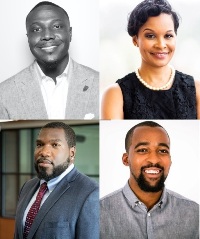 In this episode, Nathaniel Stewart talks with Mauriell Amechi, Regina Gavin Williams, and Blayne Stone Jr. about how the transitions and pathways to postsecondary education are similar and different for Black former foster care students. The scholars also discuss key elements to successfully connect foster care youth to educational resources that help advance the postsecondary education opportunities for this student population.
In this episode, Nathaniel Stewart talks with Mauriell Amechi, Regina Gavin Williams, and Blayne Stone Jr. about how the transitions and pathways to postsecondary education are similar and different for Black former foster care students. The scholars also discuss key elements to successfully connect foster care youth to educational resources that help advance the postsecondary education opportunities for this student population.
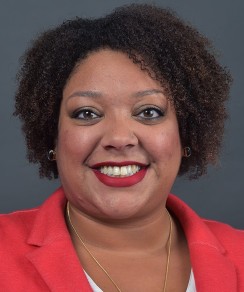
Maddy Day
The Impact of Campus-Based Support Programming on Foster Care Collegians' Postsecondary Access and Retention
In this episode, Chequita Brown of OCCRL talks with Maddy Day about the Fostering Success initiative in Michigan and the impact of campus-based support programming on foster carecollegians' postsecondary access and retention.
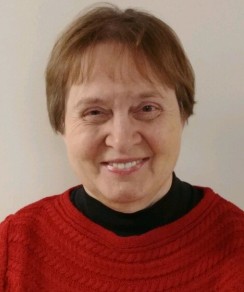
Patricia Palmer
How Youth-in-Care in Illinois Can Access Educational Resources to Pursue a Postsecondary Education
In this episode, OCCRL research assistant Chequita Brown continues the conversation on foster care youth by talking about with Patricia Palmer about accessing available resources in Illinois for youth-in-care who want to pursue a postsecondary education.
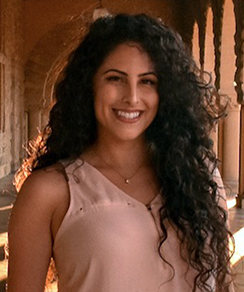
Nidia Ruedas-Gracia
Conceptualizing 'Sense of Belonging' Among Students From Historically Minoritized Racial Groups Within Higher Education
In this episode, Colvin Georges Jr., a research associate at OCCRL, talks with Dr. Nidia Ruedas-Gracia about what it means to have a sense of belonging and discusses her research in this area. They also discuss how a sense of belonging affects college students from historically minoritized racial groups.
Postsecondary Programs and Services for Current and Former Foster Care Youth in California
By Chequita S. Brown, Nidia Ruedas-Gracia, and Eboni M. Zamani-Gallaher
This brief highlights postsecondary programs and services in California that support youth in care, in addition to young adults who are aging out of foster care. Read more.
Tracking College-to-Career Pathways for Foster Youth
By Chequita S. Brown
In this OCCRL Thought Paper, Chequita S. Brown relates how tracking the data of students with foster care experience helps to recognize them as a legitimate student population. She offers recommendations on how to do this and conveys the many obstacles that can hinder the academic and career success of foster youth. Read more.
Black Youth in Foster and the School-Prison Nexus
By Royel Johnson
In this OCCRL Feature Brief, Dr. Royel Johnson argues that the foster care system, and more specifically congregate care facilities, are part and parcel to the enhancement of carceral state power. Read more.
Postsecondary Programs and Services for Current and Former Foster Care Youth in Illinois
By Chequita S. Brown, Eboni Zamani-Gallaher, Nidia Ruedas-Gracia, and Nathaniel M. Stewart
This research brief provides an overview of programs and services that helps strengthen postsecondary pathways for current and former foster youth in Illinois. Read more.
Foster Youth and Basic-Needs Insecurity
By Dra. Nidia Ruedas-Gracia, Chequita S. Brown, Dr. Mauriell Amechi, Dr. Eboni Zamani-Gallaher, and Nathaniel M. Stewart
This article discusses how COVID-19 has intensified the vulnerabilities of foster youth and former foster youth, many of whom are Black, Native American, Alaska Native, and multiracial children who have a higher rate of placement into foster care than White youth (Federal Interagency Forum on Child and Family Statistics, 2016). Read more.
(From the Fall 2020 UPDATE on Research and Leadership)
Exploring Equity in Postsecondary Education
By Heather L. Fox, Eboni M. Zamani-Gallaher
This chapter examines how postsecondary practitioners are encouraged to work collaboratively with child welfare agencies and other community-based organizations to identify and implement culturally responsive supports for former foster youth to promote early academic achievement. Read more.
The Forgotten Students: COVID-19 Response for Youth and Young Adults Aging Out of Foster Care
By Mauriell H. Amechi
This policy brief outlines recommendations for Congress to consider regarding the country's COVID-19 response, in an effort to prioritize the availability of essential supports and resources for youth and young adults who are aging out of foster care. Read more.
Spotlight on Diversity, Equity, and Inclusion with Community College Leader Terrance Bond
As community colleges work to advance equity, the acronym DEI (diversity, equity, and inclusion) is often central to conversations and frequently referenced in mission statements, strategic plans, and institutional committees. As a part of highlighting equity initiatives in Illinois community colleges, I had the opportunity to speak to Terrance Bond, assistant to the president for equity, diversity, and inclusion at Heartland Community College.
HCC’s district is located in central Illinois with a main campus in Normal and additional locations in Lincoln and Pontiac. Terrance earned his Bachelor of Arts degree in comparative studies in religion from the University of Wisconsin–Eau Claire. He attained his Master of Science degree in college student personnel administration from Illinois State University and is pursuing a Ph.D. in education administration at ISU. Our conversation is summarized below and highlights the importance of leadership for DEI initiatives within the Illinois community college system.
Can you describe your role at Heartland Community College?
This is my fourth year at Heartland. I had previously served as co-chair of the task force for diversity and inclusion. The work of the task force was coming to an end, but the priorities defined still-needed direction and support. This position was established as an opportunity to continue working toward the outlined goals to make DEI institutional priorities, providing resources that include the possible creation of a permanent executive-level position, but we didn’t want to jump in without time and space to really think about what we need at Heartland. We are working through that process, and as people return to campus, hopefully we can expand and continue that conversation.
What educational and professional experiences prepared you for this role at Heartland Community College?
Previous to this role, I was the Title IX coordinator as the associate dean of students for equity, compliance, and achievement. Those all encompass equity and overseeing the grievance process as well as supporting student access and accommodations services. The achievement piece was new in terms of exploring data points to identify opportunity gaps that we expected were present. Grievance procedures and complaints are a microcosm toward really understanding what people are struggling with—a lot of times they are complaining about the way the system is not working in their favor. As I spent more time connecting different complaints and grievances, I came to understand these really aren’t isolated events but are part of larger “pain points” where we can discover them and start to change our culture. We can look through an institutional lens, not just at the student-support level.
Please describe the context of Heartland Community College and the importance of your role in supporting the overall strategic vision and mission of the institution.
I love being in a community that is considered a small city or town. While there are over 100,000 people in Bloomington-Normal, McLean, Livingston, and Logan counties have these rural towns that join to create our district, so it’s both urban and rural. When we talk about DEI, it’s always in layers, so it’s understanding inclusiveness or concerns about being exclusionary for both urban and rural areas. How are we supporting, bringing in students? How are we making people feel like they belong here and how are we not doing that? This role is extremely important to what we are trying to accomplish in our overall vision to support every student and every learner, to be honest about who the learners are that we aren’t supporting and how we could be better. We have started to look at enrollment data in terms of where students are arriving from. We’re not there yet with retention data but will be looking at student progression based on different contexts.
Can you define the terms equity, diversity, and inclusion and how you think they connect to each other in practice?
I came into this role in May 2020, and we can remember back to what was happening: There was a lot going on. I spent the first couple months with this question in terms of how we define these terms and arrived at the question being how we want to support efforts on campus that are equitable, diverse, and inclusive. That was more manageable, talking about equitable environments where people get the supports needed to achieve their objectives.
We talked about diverse representation and how individuals from different groups are offered the ability to navigate our spaces, whatever those spaces happen to be and however people identify. How are they navigating and are they able to navigate comfortably.
We went right at the culture, an inclusive culture, how we disperse or share power to create welcoming spaces. If we want to be inclusive, people just aren’t here, but they’re given power and opportunity to affect how our culture is shaped. That really helped focus in on spaces and how we navigate spaces— they all need to be welcoming. It’s not about faculty members yielding their power to let students do whatever they want. It’s figuring out how those students are able to feel like they belong in that classroom and that they are welcomed.
The COVID-19 pandemic only intensified existing inequities and the increased attention to addressing racial injustice. How has your own institution responded?
We were already in a process of implementing online quality matters standards, so all faculty had to go through a course to be certified to teach online, and students had experience with our online learning management system. Our focus was who had access to the computers, so a lot of effort to ensure all students had a laptop or Chromebook, something with a camera to allow them to participate and engage with us. Our initial response was how do we make sure everyone has access and how do we make sure the way we present courses and testing take into account students’ different responsibilities. We shifted to a fully remote environment, unless you had an experiential classroom requirement.
Our campus was operating at 85-90% virtually, which really separated students from employees. Many of our efforts last year to address racial injustice were amongst employees. From there, we had a lot of great discussions and professional development opportunities, ran a couple book clubs, but really the goal was to provide people space to talk about what was going on. We tried to provide that space for students, but we weren’t successful getting students to log in for that conversation. Our hope is that when they’re back on campus, we can engage the whole campus community.
As your position requires you to work with on- and off-campus partners to advance equity initiatives across diverse programs of study, what advice would you give to other colleges seeking to engage in these types of partnerships?
It takes a lot of work. It really is relationship-building and finding a project that the two partners can work on together that will advance a shared goal. The real driver is the relationship. You’re trying to build linkages with other organizations so they can see where they can connect with the college, whether it’s with one of the universities in our town or with community organizations. We’re really just trying to figure out ways that we can share the load because it’s all trying to advance the same goal so that people in our communities feel valued and don’t feel like the systems are set up against them. So any opportunity that the institution has to engage in regular conversations; for example, with our K12 partners, to talk through what are some of those equity concerns they are seeing as their students come to us, and what are we seeing as they come through our college. By having those partnerships, you’re just adding to that conversation and growing and strengthening it.
What do you find most fulfilling about being in your position?
I love working with people and I love data; this gives me the opportunity do both. I think so much of inclusion is helping people to be their authentic selves. People want to show up to work and support the institution they work for, to feel like their work is valued, that they’re recognized for achievements. We’re at a community college and most people who are working here want to provide support for the community. Being able to listen to the hearts of our employees and what they’re passionate about and layering that into understanding what is blocking us from being able to do that for everyone. Looking at our data, at our outcomes, and really being able to say, ”"If this is our trend, what can we do about it?”
One of my best conversations was just asking that question with a specific program. We don’t have students of color in our program, and we asked the right questions and got the right data to the team. After looking at the data and hearing the team say, “What if we did this? This test was the reason this student didn’t get in, which would have otherwise had amazing grades, so what if we didn’t have such a strong emphasis on this test?” Yes! I couldn’t have had a more perfect data conversation before coming to this interview. That’s what we want to see. We have certain processes set up at our institution, and if we’re not reviewing those processes and seeing how they’re impacting individuals, then we don’t have the ability to change them. We just assume they’re working the way they should. To be a part of those conversations is amazing.
What would you say are the primary challenges that you encounter in your position?
When I think about challenges, it’s really just trying to get people to see that they are already doing aspects of this work. Diversity, equity, and inclusion—if you weren’t doing that in an institution, your institution wouldn’t survive. If you didn’t care about having various voices at your table, if you didn’t care about people feeling like they belonged on your campus, then you wouldn’t survive. Institutions have shut down because they don’t know how to listen to the voices in their community. While we talk about DEI as a new thing, it’s really not new. I think that helping people see this isn’t some new initiative that we’re trying to do. What we’re saying is that the things that we do great are great for some students or great for some staff, but they’re not great for everybody. Some of the amazing support services we provide are only being utilized by a portion of our campus, and we have to go in and ask why. Don’t you want everyone who utilizes your services to love that they came in to speak to you, and don’t you want to know why people are walking away after their first time, or never coming to see you, or telling people not to come to your department? Trying to get people to see that this isn’t just another thing, it’s part of who we are. If we say that everybody is welcome because we are an open campus, then we’re going to assess that value and say, “Is that true?” If I can find a place where we’re doing great work, that’s where I start my focus, and from there we can say, “Except for in this pocket, this characteristic in students, for some reason we’re not doing so well,” then try and see if we can get to why.
When we think about higher education leadership, the dedication of a position to DEI work is relatively new, especially in community colleges. Do you find that your particular role is unique when you look at peer institutions, or do you see shifts toward this model?
I work with a group of community college leaders in the Illinois Community College Diversity Commission, and what I see there is we do have a few people with a title, including DEI leadership, but even within that space, it’s really campus-specific. I do see this as identifying leaders and asking them to step up to drive initiatives, and I think that process will continue. We need people across our campuses who can see what, as a collective, we can’t see. What I don’t know is if it will continue in leadership roles, executive leadership roles. We still haven’t even landed on our campus in defining exactly how this position will be integrated. I do hope that people see the value of having the leadership and having that voice, because I have been able to sit in on conversations and ask new questions, and that’s what DEI leadership brings to an executive team. Just to begin asking different questions or asking the same questions with a different lens, or trying to get them to disrupt some of those mental models and start to see different ways of thinking about similar challenges that may have already been identified.
What advice would you give to institutions that are trying to advance DEI work but have not dedicated or established a full-time person to lead such efforts?
The two things I would lean on is to disaggregate your data and amplify the underrepresented voices. Campuses need to make sure they’re not looking at data in the “all” perspective. Anytime you’re in a predominately white institution (PWI), when you look at aggregated data, their voices are going to be the voices that you see and hear. When you can separate that information, you can start to see trends and ask questions that will help the institution as whole, to see those different barriers that might be taking place. Many times, I hear different partners talking about anecdotal information that they’ve heard from staff members or students, and I would say as it relates to your underrepresented voices, don’t use those as anecdotes. Consider those as representative to what might be going on; when someone from an underrepresented population is willing to share their experience with you, that’s a big step for that person. Very often it’s something that they’ve sat down and considered and thought through and believe that you might be a person who’s willing to listen. And when that happens, we can’t consider those moments as anecdotal opportunities; those should be considered gifts that we were able to listen to, what was going on in a smaller subset of our campus.
That’s also the same with survey information. Who is completing the survey? If you have a survey and you don’t get a lot of involvement from your underrepresented populations, then see if you can go back and ask similar questions to those groups. I think what that does is clarifies to the institution an issue on our campus: This is something we need to be focusing our attention on. Everyone coming back to campus provides an opportunity to bring various populations together. Along with racial groups, we are looking at part-time groups, adult students, and multiple types of populations to bring together and start a conversation. Even if they’re new students, they had a crazy 2020 educational experience in a lot of ways. It was different for all of us, and I think starting off the year by giving our learners the opportunity to talk with each other will be a good entryway.
